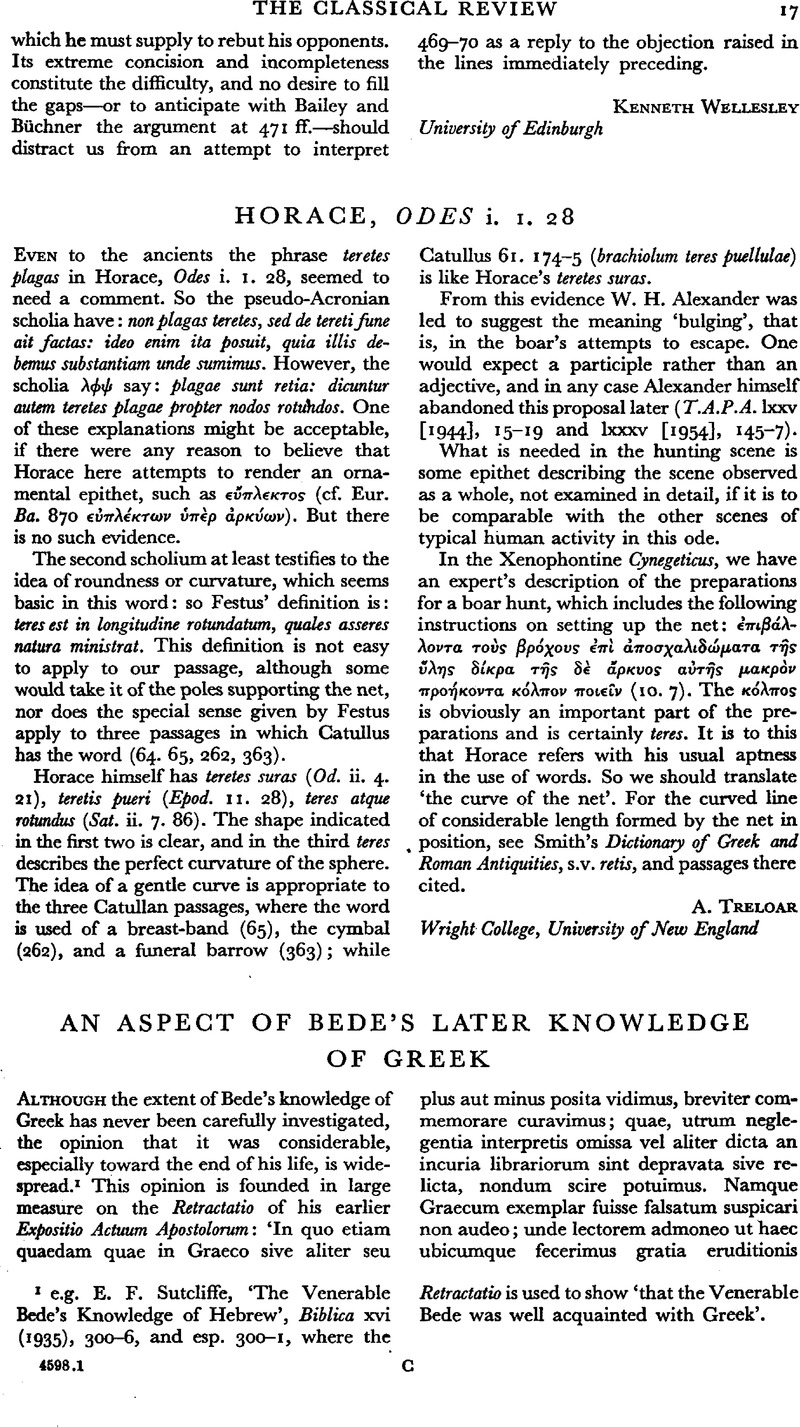Article contents
An Aspect of Bede's Later Knowledge of Greek
Published online by Cambridge University Press: 27 February 2009
Abstract

Information
- Type
- Review Article
- Information
- Copyright
- Copyright © The Classical Association 1963
References
page 17 note 1 e.g. Sutcliffe, E. F., ‘The Venerable Bede's Knowledge of Hebrew’, Biblica xvi (1935). 300–306Google Scholar. and esp. 300–1, where the Retractatio is used to show ‘that the Venerable Bede was well acquainted with Greek’.
page 18 note 1 Ed. Laistner, M. L. W., Bedae Venerabilis Expositio Actuum Apostolorum et Retractalio (Cambridge, Mass., 1939) (hereafter Bede), p. 93Google Scholar. Bede used a bilingual manuscript for these revisions, almost certainly Bodleian MS. Laud Greek 35; cf. Bede, pp. xxxix–xl and the references there.
page 18 note 2 Bede, p. 113; cf. his similar remarks on Acts vii. 56, xx. 9, xxi. 39. In many, if not all, the manuscripts the Latin alphabet is used for Greek words.
page 18 note 3 Bede, p. 145. Jones, C. W., C.R. xlvi (1932), 248–249Google Scholar, says that Vegetius ii. 25 is the source, but MacDonald, G., C.R. xlvii (1933), 124Google Scholar, suggests that Bede used a glossary, not De re militari itself. There are in fact two relevant passages in Vegetius, ii. 25 and iii. 7: ‘Scafas quoque de singulis trabibus excauatas … secum legio portat, quatenus contextis eisdem, sicut dicunt, monoxylis, superiectis etiam tabulatis, flumina … transeantur’; ‘Sed commodius repertum est, ut monoxylos, hoc est paulo latiores scafulas ex singulis trabibus excauatas … secum portet exercitus.’ (Ed. C. Lang, Leipzig, 1885.)
page 18 note 4 The form of ‘μονοξ⋯λας’ is doubtful. Bede is freely paraphrasing, and the fem. acc. plur. may be meant for an adjective; or, if it is a noun and thus a mistake for a neut. acc. plur., the error may be scribal and not a reflection of Bede's intention. Vatican MS. 4493 of Vegetius (saec. xii; Lang, pp. xxxi–xxxii) has ‘monoxillas’ in 3. 7, and Bede's source may have been a manuscript of this type. (British Museum, Harley MS. 1915 [saec. xiii], fol. 1921, has ‘monoxillas’ with the marginal correction ‘quasi diceret monixilla’ [sic].) But the similarity of De re militari ii. 25 and iii. 7 suggests that Vegetius was copying, not from himself, but from another source now lost, and it may be that Bede saw this source and not Vegetius at all.
page 18 note 5 Ed. Colgrave, Bertram, Felix's Life of St. Guthlac (Cambridge, 1956), p. 88 and note 20.Google Scholar
- 1
- Cited by

